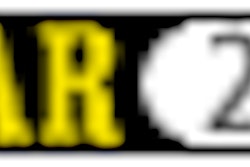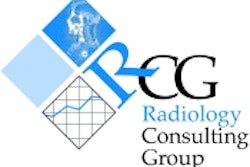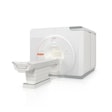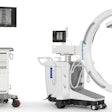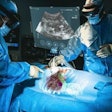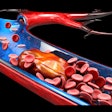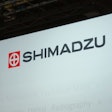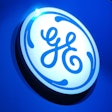
CLEVELAND - About 85 vendors had signed up back in mid-2001, when SCAR organizers were planning the exhibit floor for this year's meeting. By the time SCAR 2002 opened there were more than 100 exhibitors, and the square footage of their displays was up more than 30% from last year’s show in Salt Lake City.
The SCAR conference has grown from an intimate hotel-based gathering to a full-blown convention-center show, requiring six hotels to house the nearly 2,000 or so attendees and exhibitors, a record for a show dedicated to solely PACS and related digital technology. Show attendance has also grown consistently, by about 20% per year over the past six years, and has grown fourfold since the first SCAR show in 1996.
Compared with the RSNA meeting, where smaller vendors tend to get lost in the shadows of the behemoth majors, SCAR is a dream for independent vendors. Companies like Ultravisual Medical Systems, Stentor, MTS, SmartPACS, and numerous others had booths that were just as large as some of their modality- and film-based PACS competitors.
Vendors had the opportunity bring their PACS message home without being overshadowed by a new modality launch -- but that doesn’t mean that the message got delivered. A few companies had booths with clear, concise signage combined with an easy-to-access booth layout. Unfortunately, most vendors either missed the message entirely -- muddling up their booths with storyboards that brought forth the Biblical message of Exodus in ultra-small print -- or lost attendees in slick graphics that said nothing about the company’s line of business.
Technologically, there were few real breakthroughs. The availability of a low-cost RAID (redundant array of inexpensive disks) was brought home by Consensys, which showed a fault-tolerant server with a terabyte of RAID for under $25,000. However, the acronym the company used to define the product -- NADS (network-attached DICOM storage) -- could use some marketing refinement.
It was interesting to see cardiology PACS at a radiology show, as demonstrated by both Philips and Agfa, as well as integrated information systems as shown by several other vendors. It was a clear sign that integrated information and imaging systems have advanced beyond the concept stage, especially since dedicated systems-based archives are beginning to be challenged by enterprise-wide storage-area networks (SANs).
Probably the biggest talk of the show was McKesson’s bid for ALI Technologies for $340 million. ALI had skyrocketed to the #5 position in PACS sales on the heels of several multimillion-dollar deals, and had long been recognized as the next potential acquisition target by those in the know. Still, the price McKesson is paying for ALI stunned even the most experienced industry observers.
The McKesson purchase also signaled an increasing awareness of PACS among RIS vendors. Competitors like IDX Systems, Cerner, and others are scrambling to get a piece of the PACS marketplace, especially in light of the major vendors’ embrace of "integrated, seamless" RIS/PACS. Many of the major RIS vendors showed their software, but mostly just the applications related to their PACS initiatives.
Peripherals and components manufacturers, especially monitor vendors, were thick on the floor, with nearly a dozen companies vying to be the flat-panel provider of choice by unseating market leaders Dome Imaging Systems (now acquired by Planar) and BarcoView.
Agfa touted its 2001 acquisition of Talk Technology, with Talk products getting prominent placement by both firms (half of each vendor's booth was dedicated to the other’s products). Interestingly, Dictaphone, which bought out Lernout and Hauspie’s PowerScribe voice recognition product, had only a tiny booth, while Dragon Systems, IBM, and others bowed out of the meeting.
As expected, the Web played a prominent role in the presentations of most vendors, from Web-based image distribution offered by nearly every vendor to Web-based scheduling packages from Ximis, Peake Software, et al. The demise of the term "mini-PACS," which had been used for years to describe entry-level PACS products, was both interesting and welcome.
There were also conspicuous absences on the part of several 3-D software vendors (only Voxar, TeraRecon, and PointDx showed), computer-aided detection (CAD) manufacturers, and several of the "major-minor" PACS vendors, including Merge Technologies, which recently announced the purchase of software provider eFilm (although Merge representatives did attend the show). A number of well-known digital radiography (DR) vendors also eschewed the meeting.
There also was very little talk or display of digital radiography on the floor, with only Canon, Hologic, and Kodak showing their DR products. This was a surprise, given the level of interest and number of scientific presentations on DR at this year’s show, and high-level of promotions shown about the technology at last year’s RSNA conference.
It was also interesting to note Konica’s entry into the computed radiography (CR) market, and, with the exception of Fuji, that Agfa, Kodak, and Philips all elected to show single-plate CR readers instead of multiplate units. There have been some significant advancements in the speed of tabletop CR units, yet the limited price delta between single and multiplate-reader CR units still presents a stumbling block to this technology, except in low-volume applications like imaging centers.
As I left the floor of the exhibit hall, only one question remained: Who’s #1 in the KLAS Report? After all, DR Systems, ALI, Philips, and Stentor all claimed to have been ranked #1 by KLAS in the market research firm’s PACS customer satisfaction ratings published last year. I smiled, thinking that with claims like this, it's no wonder we’re still a bit confused. But I was excited too. Any market with four number ones can’t be all bad.
By Michael J. CannavoAuntMinnie.com contributing writer
May 4, 2002
Copyright © 2002 AuntMinnie.com




